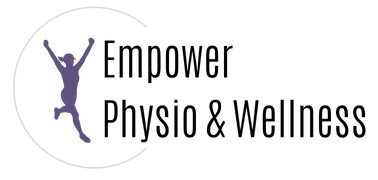When it comes to exercise, more isn’t always better. You don’t need to spend 60 minutes in the gym every day, dripping in sweat, feeling like you just got your a$$ handed to you on a silver platter for a workout to be effective. Spoiler alert: You won’t get the results you want, you’ll probably be sore for days, and you’ll dread your next workout. Let’s bust 3 common myths about exercise and cover how to be successful while keeping it sustainable for life.
Myth #1: You should push yourself to the limit
What are you really gaining from a workout that leaves you feeling totally wrecked? You’ll probably be cursing those lunges for 3 days every time you get up from sitting down, and you definitely won’t be counting down the hours until you can come back for more. Instead, make sure your workouts leave you feeling strong, energized, and empowered. A productive workout challenges your muscles, balance, and cardiovascular system. Remember:
- Sweat is a good thing, but you don’t need to be leaving sweat puddles around everything you touch.
- Breathing heavily and exerting yourself means you’re pushing yourself, but you don’t need to be gasping for air or on the verge of an asthma attack.
- Feeling the muscle burn is a good thing, but being sore for 3+ days afterward is a sign you overdid it.
After a workout, you should feel energized in a way that you were appropriately challenged. Yes, to see results you need to push yourself out of your comfort zone. But it’s so important to listen to your body to work at intensities that honor where you’re at.
Myth #2: No pain no gain
This is probably the myth about exercise that irks me the most because it’s simply not true. You do not and should not be pushing into pain, and it most definitely is not a prerequisite for a successful workout. Instead, embrace the sensations that challenge your body but avoid the pain that leads to injury. Here’s a quick guide to sensations:
- Muscle burn. This is the burning feeling you get when your muscles are working, especially at higher intensities. Some people describe this as pain during a workout, but this is actually a productive sensation of your muscles being challenged.
- Stretching. This is the feeling you get when you are moving your muscles and joints through their full range of motion. The intense stretching feeling is usually felt at end range, which is the furthest the joint or muscle is able to move. Again, this can sometimes be described as pain, but moving to your end range is a wonderful way to improve flexibility and mobility. Just don’t take it too far to the point where you are over-stretching and actually preventing yourself from gaining mobility.
- Pain. This is the one you want to watch out for. Any sharp, shooting pain that makes you move differently, limp, or compensate is not what we’re looking for. You will know this kind of pain when you feel it, and if you’re dealing with an injury it will be familiar to you. Do not push through this pain. There’s nothing to gain and you risk injuring yourself.
Be aware that when you’re challenging yourself in new ways, your brain can interpret it as threatening even though it poses no danger to you. So get in tune with your body when you feel new sensations during a workout. Does it feel productive? Or does it feel aggravating in a bad way? Keep going if it is productive and modify the exercise when it does not feel productive. For more information on the perks of modifying exercises, check out this blog post.
Myth #3: You need to be in the gym for an hour every day to get results
That isn’t feasible for everyone and feeling the pressure to exercise for 60 minutes a day often leads to exercising for 0 minutes a day. The truth is, you can get an effective workout in 20 minutes or less and rest days make your workouts more effective.
In shorter workouts, there’s typically less rest time which allows you to keep your heart rate up and work to the point of muscle fatigue. Longer workouts often have more breaks that may not be needed. To take this method for a test drive, check out my 15-minute full-body workout.
You also don’t need to do a super challenging workout 7 days a week. This can actually have the opposite effect and diminish your performance, inhibit recovery, and leave you feeling depleted.
After a workout, your body repairs the muscles you worked while boosting the cardiovascular system. If you don’t leave adequate time for recovery, the cardiovascular system and muscles actually start breaking down instead of building up. Taking 1-2 rest days per week, getting 7-8 hours of sleep per night, and a healthy diet all make a huge difference.
Also, recovery days don’t mean couch potato days. Consider going for a leisurely walk, meditating, taking a yin yoga class, or doing stretching or mobility work. All of these things will keep your body limber while still allowing it to recover after a workout. For more on this, check out my blog post on rest days.
When I program workout routines for my clients, I customize them to their specific goals but ALWAYS include 1-2 rest and active recovery days. The other 5-6 days can be any mix of yoga, running, cycling, lifting, or any other activity you like. The best workout routine is one you enjoy!
And there you have it – 3 myths about exercise busted! I hope this encourages you to honor your body and move it in ways that feel good long-term. Need help coming up with a customized plan? Let’s chat.



